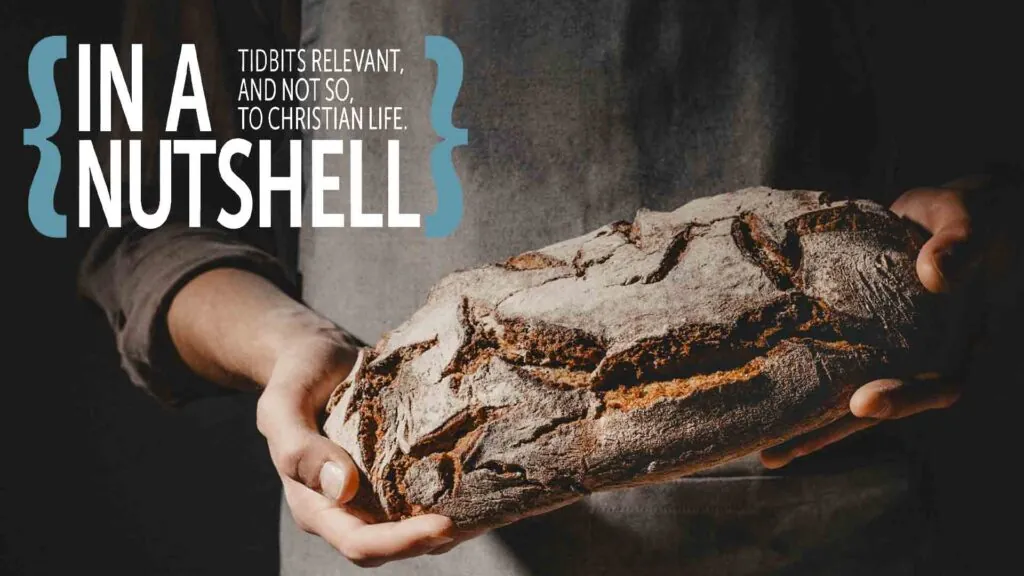Evolving “facts”
When a student visited his old university during a 20-year reunion he discovered that his old Evolutionary Science professor was still working there. He decided to track down the professor and found him in his old classroom grading exam papers. The former student was surprised to see that the questions on the test were the exact same ones he’d answered two decades before. So he asked his professor, “With the tests always the same year to year, aren’t you worried that your new students will be able to cheat off tests from your previous classes?”
The professor smiled as he answered: “The test questions might stay the same, but the answers are always changing.”
Wearing your convictions
A friend used to visit with the “reproductive rights” group on campus every time they set up a display. He went there to talk to them, and I followed along to grab a copy of all of their pamphlets, which I’d later shred. I knew what I was doing was petty and pathetic, but it still struck me as more useful than what my friend was doing. What good would talking ever do with these people?
Except… he reached one of them.
It took repeat visits, and I don’t know that he changed her mind. But what she said made it clear she did finally hear him: “You really think it’s a baby, don’t you? I always thought you guys just wanted to control women’s bodies.”
Many on the other side of the abortion debate don’t know anyone pro-life. Or if they do, they don’t know that they do, because the slaughter of the unborn isn’t a topic most pro-lifers are eager to raise. But for the unborn’s sake, we must. For the sake of the unborn, we have to start putting our pro-life convictions out there – that our value comes not from our size, abilities, or age, but being made in the Image of God (Gen 1:27, Gen. 9:6) – so that anyone who is open to the truth will know who to talk to. And one way to brand yourself clearly and loudly is by wearing a pro-life shirt. There are lots to pick from online, but some options include:
USA
LiveAction.org
Abort73.com
ParacleteTees.com
ProlifeShirts.com
Canada
MarchForLife.ca
Sequel to The Screwtape Letters
Over the years radio commentator and columnist Paul Harvey (1918-2009) shared a few different versions of a curious column that, like C.S. Lewis’ The Screwtape Letters before it, seemed to provide insight from the Enemy’s side. This excerpt is from a 1996 version of his “If I were the Devil” column:
“…I would whisper to you as I whispered to Eve: ‘Do as you please.’ To the young, I would whisper that the Bible is a myth. I would convince the children that man created God instead of the other way around. I’d confide that what’s bad is good and what’s good is square. And the old, I would teach to pray after me, ‘Our Father, which are in Washington …’”
The Christian rooster?
You’ve seen them on barns, but did you know rooster weather vanes have a history on churches? The Farmers’ Alamanac says it started with a couple of popes. Gregory I (c 540-604) declared that the rooster – already an emblem for Peter who denied the Lord three times before the rooster crowed – should be the emblem for Christianity. Then, a few hundred years after, Nicholas I (c 800-867) was said to have ordered churches to display a rooster on their buildings.
One problem with this account is that the rooster is said by some to be a specifically Protestant symbol. For example, in 2011 a reporter for the Star News asked the pastor of the First Presbyterian Church in Wilmington, NC why they had a rooster topping their steeple. Dr. Ernest T. Thompson explained that in Europe roosters had been used to distinguish Protestant churches from Catholic ones, which were topped with crosses.
“Our rooster reminds us then of our Protestant heritage. It points to the dawning of a new day, and to the joy of the resurrection. The rooster also points to Peter’s threefold denial of Christ ‘before the cock crows,’ and so is a reminder to us not to deny our Lord.”
Here we have the rooster being associated with not just Peter, but the new day’s herald is also said to symbolize the new beginning that we have in Christ’s victory.
So if you see a rooster on a church, that’s what it might represent. But if you really want to know, you best ask someone from that church.
R.C. Sproul on why public schools have to go
Why do we have our own costly Christian schools when a free education can be had at public schools? It’s because, as Dr. Sproul explains, of what the public system is teaching children about God.
“There is no such thing as a neutral education. Every education, every curriculum, has a viewpoint. That viewpoint either considers God in it or does not. To teach children about life and the world in which they live without reference to God is to make a statement about God. It screams a statement. The message is either that there is no God or that God is irrelevant. Either way, the message is the same.”
But if public schools are being used to teach that God is irrelevant – if they are doing the work of the Adversary – why aren’t we trying to defund and dismantle them? Is it because we aren’t as concerned as we ought to be about other people’s kids? Or is it because we don’t know what to offer as an alternative? Sure, we have our own Christian schools but what’s everyone else going to do? What if they can’t afford their own private schools?
One short-term fix is homeschooling, an often inexpensive alternative readily available with loads of online help. Another fix is a voucher system where the government still hands out education dollars, but to parents instead of schools. Then parents can decide what schools they want to support. Of course, so long as the government is paying for things, they’ll try to control it. That’s why the ultimate goal has to be to get them out of education entirely and return responsibility to parents. That’s no small task – it might take generations to take back a role the government had dominated for decades. Not a small task, but as R.C. Sproul makes clear, it is a necessary one.
The Amish on smartphones and social media
In a recent column, “What we can learn from the Amish,” Jonathon Van Maren shares this anecdote:
“…an Amish historian was once giving a lecture to a room full of academics on how the Amish live. To illustrate the Amish mindset, he asked his audience how many of them felt they watched too much TV and thought their lives would be better off without it. Nearly every hand in the room went up. Having admitted this, the historian went on, how many of you will go home and get rid of your TV? And every hand in the room went down. That, the historian explained, is where the Amish differ from the rest of society: they have decided to reject those things that will interrupt or inhibit the sort of lives they wish to live, while most of us remain voluntary slaves to things we know we would be better off without.
Van Maren then applies that to our technological age, to smartphones and social media, and how often we will complain about them, but how few of us are willing to forsake them or even put any sort of limits on them. The challenge the Amish present us is to consider,
“Does this help or hinder the sort of life I should live? And if it does not, why am I allowing it to influence and shape my life for the worse?”
Evolution is a non-starter
People can make more people. Dogs and cats can make more dogs and cats. The regularity of it might be why we’re not struck by the sheer wonder of this self-replication. That we’re under awed is one reason too many are overly impressed with evolution, which makes the absurd claim that this self-replication arose on its own, with no intent or intelligence behind it. As an exasperated Granville Sewell notes, over at EvolutionNews.org:
“…with all our advanced technology we are still not close to designing any type of self-replicating machine. That is still pure science fiction. So how could we imagine that such a machine could have arisen by pure chance?”












